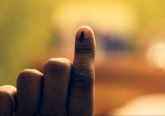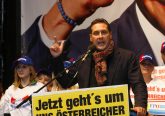Politics has historically been dominated by men, and women have only relatively recently been elected to the UK Parliament in significant numbers. In order for women to be effectively represented in the political domain, they must also be adequately represented in the public discussion of political affairs that takes place in the news media. The ways women are depicted in news sends out important messages about their place and role in society and therefore, if women are absent or marginalised in political news, this reinforces their marginal status in the political process. Historically, women have struggled to achieve much visibility in electoral coverage, and by drawing upon data from the Loughborough Communication Research Centre’s real-time analysis of national broadcasting and press coverage, we can see that the 2015 election was no different. Similar studies have been conducted by scholars at Loughborough during each General Election since 1992. Further information about the methodological aspects of this research is available on our project blog.
This election was the first where three women party leaders asked for our votes and consequently sought the media attention that political campaigning entails. Nicola Sturgeon (SNP and Scottish First Minister), Leanne Wood (Plaid Cymru) and Natalie Bennett (Green Party) all took part in the televised leaders’ debate and were therefore given a national platform for the first time. In the first week of coverage, women as a whole received a modest increase in their relative prominence accounting for 19 per cent of all individuals mentioned in the first week of the campaign, compared to just 14 per cent in both the 2005 and 2010 elections. This early peak in coverage is largely due to the abundance of media reaction and analysis of the televised leaders’ debate. By the end of the campaign however, this modest increase was all but eliminated, with the final count demonstrating that throughout the campaign just 16 per cent of all individuals were women. A closer look at the data suggests that women were better represented in broadcast media than in the national press, since 22.8 per cent of all individuals in the televised coverage were women compared to just 14.5 per cent of individuals mentioned in the press. Either way, women continue to be significantly underrepresented in the national media coverage of politics in the UK.
Despite the presence of Sturgeon, Wood and Bennett, women politicians made a very small impact in the news coverage as a whole. Our research showed that just 15.2 per cent of all politicians featured in the coverage were women. Only four of the top twenty most prominent individuals in the campaign were women. The most high profile of these was of course Nicola Sturgeon, who was the fourth most prominent individual in the campaign (being mentioned in 5.7 per cent of all items). Her impressive performance in the debate and her potential role as a decisive partner in any potential coalition government meant she gained a considerable amount of attention. The Conservative-supporting press were keen to portray her as a threat to national unity. The most obvious example saw her referred to as ‘the most dangerous woman in Britain’ by the Daily Mail. Wood and Bennett, however failed to have much of a sustained impact on the coverage; Natalie Bennett was the 12th most prominent and Leanne Wood, the 17th. Other high profile women from the cabinet, like Home Secretary Theresa May and Education Secretary Nicky Morgan, were largely absent.
Election coverage ordinarily incorporates a range of different commentators, offering their views on almost anything from the policy positions of political parties to speculation about the potential outcome of the election. These include individuals from the world of business, academia and the public sector (such as doctors and teachers) who are all called upon to comment upon the proceedings. Despite the potentially large pool of individuals journalists are able to elicit such comment from such interventions came predominantly from men. For example, just 14.4 per cent of business representatives and 13.5 per cent of other experts mentioned were women. When it comes to public sector representatives being asked to comment on the election, just 19.1 per cent of these individuals were women. This is particularly alarming as more women tend to be employed in the public sector than men. References to ordinary people were much more gender balanced, with women accounting for 46.8 per cent of individual citizens, although when you take into consideration that women account for a higher proportion of the electorate than men, this too might be viewed as problematic.
The only area that women actually dominated was the category of ‘relative of politician’. 81.2 per cent of these individuals were women. Many of these references were to Samantha Cameron, who was not only the 15th most prominent individual in the campaign coverage but appeared in a higher proportion of items than Leanne Wood. It is fairly easy to blame political parties themselves for this phenomena since the spouses of Cameron, Miliband and Clegg were actively employed in the campaigning strategies of the major parties, as we saw in 2010. This does not however explain the near absence of male relatives. It also does not explain why newspapers in particular are content to accept the presence of the Prime Minister’s wife on the campaign trail as a legitimate subject for political news.
Trying to explain why women continue to be marginalised in news coverage of politics is complex. Whilst news outlets can justifiably seek to blame political parties for choosing to foreground men in their campaign strategies, politicians can similarly criticise journalists for failing to cover a diversity of candidates. One place to start, perhaps, is to look at the numbers of women actually producing the news. Our analysis showed that of all news items that were written or presented by a single author, just 17.4 per cent were authored by women, compared to 53.5 per cent authored by men. The fact that there were around three times more male journalists shaping election coverage than female ones demonstrates that the dearth of women is not just an issue for political parties, but that national media outlets also need to consider why it is that national political journalism in the UK continues to be a domain where men write about other men. This must be taken into account when seeking to explain the continued marginalisation of women in the public discussion of politics.
This post is part of our Decision 2015 series.








No Comment